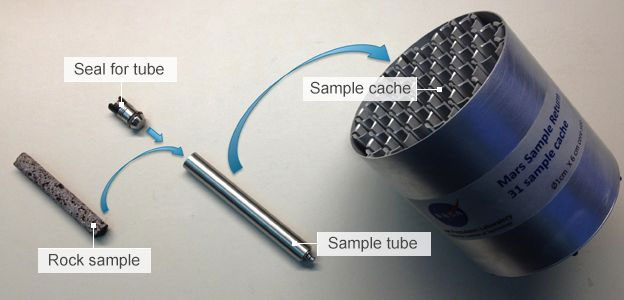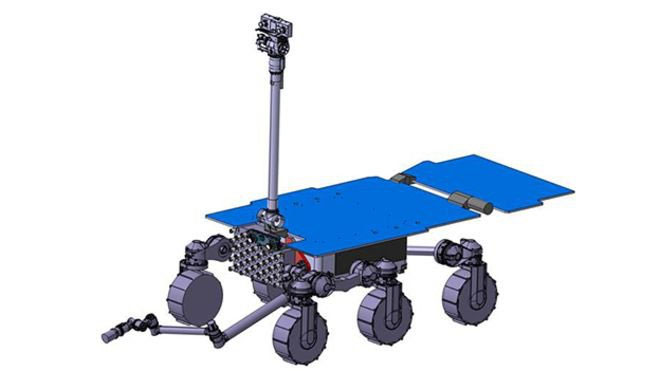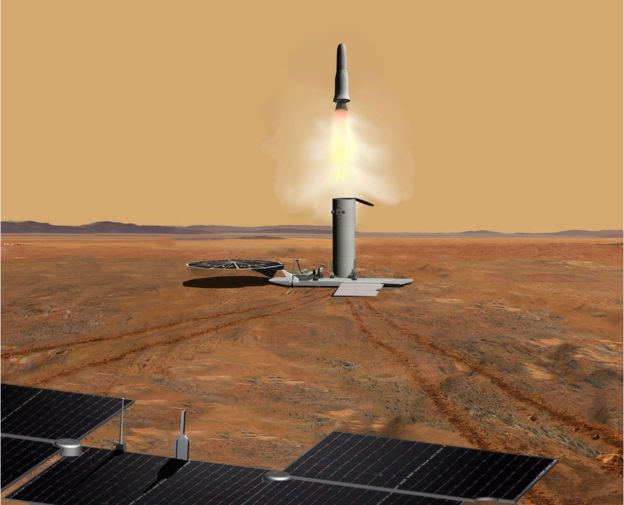Airbus is designing a self-propelled vessel to pick up the Martian specimen that is transported to Earth
In April, NASA and the European Aeronautics Agency (ESA) announced to work together to find a way to bring the sample on Mars to Earth. They now choose Airbus to hand over the contract to design a self-propelled ship to Mars operating in 2026 and bring the soil samples back.
Specifically, the task of this self-propelled ship will be the follow-up and collection of the specimens that the Mars 2020 self-propelled vessel has already prepared during operation. It sounds simple but actually creating such a self-propelled ship is not easy.

Mars soil will be removed by Mars 2020 in tubes like this.
According to the plan, Mars 2020 will dig up rock samples, contain 30 tubes and leave at the points on its route. Later, Airbus' next ship will detect the pipes from afar, find its way and use the robot arm to lift it. The job is like that until you get all the stuff and will bring it back to Earth.

Airbus' self-propelled preliminary design rendering.
Ben Boyes, the leader of the design team at Airbus revealed 'the ship will be small in size, weighing only about 130kg. However, the device on it will be very demanding. The ship will have to operate on a large scale with a high degree of automation, must know how to plan to work every day '.

After collecting enough specimens, the self-propelled train will re-launch the rocket launcher, "load goods" and activate it to transport it to Earth.
It is known that the ship will have about 150 days on Mars to collect all the specimens left by Mars 2020. After that, it will re-launch the rocket launcher, put the specimen 'bag' into the rocket and activate it to transport it to Earth. And listening is as simple as watching a movie, but the reality is a multitude of difficulties and contemplations, however, scientists still have to evaluate its feasibility to decide whether to pursue, and have a head whether to develop supporting technology or not.
- Airbus wants to build 'self-propelled taxi' for future cities
- NASA develops a new generation self-propelled vessel to explore Mars by 2020
- Earth image taken from Mars
- Airbus will test self-driving taxi at the end of the year
- Detecting traces of water on Mars
- 'Martian Gardens - Martian Gardens' helps scientists find a way to grow vegetables on Mars
- Airbus's new aircraft can fly 20 hours without refueling
- The Moot Robot takes a picture of two Martian moons
- The mission to bring 4.5-year asteroid specimens back to Earth
- Found Europe's lost Beagle 2 self-propelled vessel
- Airbus introduces the design of the 'Bird of Prey' aircraft.
- Chance to Mars of Russia's NORD device
 Announced 3 houses on the Moon and Mars
Announced 3 houses on the Moon and Mars Science proves: Mars also knows 'deflated'
Science proves: Mars also knows 'deflated' Elon Musk announced the price for a Mars trip was 11.6 billion VND, free of charge
Elon Musk announced the price for a Mars trip was 11.6 billion VND, free of charge NASA discovered strange 'gate' on Mars, is the hiding place found?
NASA discovered strange 'gate' on Mars, is the hiding place found?